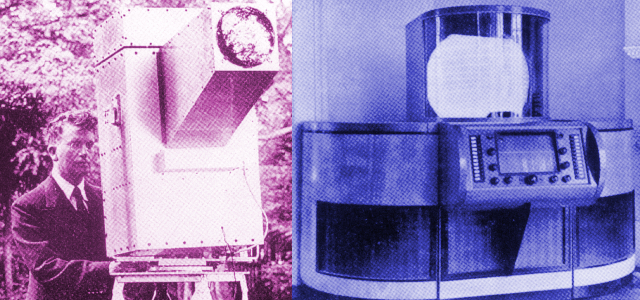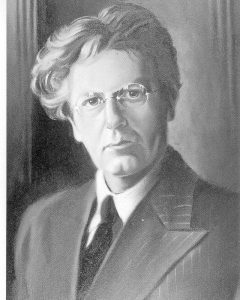
Americans tend to think that television is uniquely a technology developed on this side of the pond. What they often fail to realize is that significant contributions in television technology emanated from Europe and particularly the UK.
Some could argue, quite successfully, that it was the Scotsman John Logie Baird who produced the first true TV image of a person, as well as the first color picture, video disk recording, three-dimensional television and night vision TV, in addition to the first radio imaging, a technology that ultimately would become radar.
Youthful Days
John Logie (pronounced “Low-Gay”) Baird, or JLB as he was known to his friends and colleagues, was born in 1888, the youngest offspring of a well-respected Presbyterian minister and his wife in the small village of Helensburgh, Scotland, about 23 miles northwest of Glasgow on the river Clyde. His siblings included an older brother and two older sisters. The Baird family resided in a comfortable home called “The Lodge,” which was purchased by his father, John, for ₤1,100 upon the occasion of his marriage to Jessie Morrison Baird (nee Robertson). His mother was a descendant of the respected and financially successful industrial/shipbuilding Inglis family. Indeed, that ₤1,100 (a sizable sum in the 1880s) was made possible through a dowry to Reverend Baird from his wife’s family.
The Scotsman John Logie Baird produced the first true TV image of a person, as well as the first color picture, video disk recording, three-dimensional television and night vision TV, in addition to the first radio imaging, a technology that ultimately would become radar.
Considering that this was the waning days of the Victorian Era, young John’s father was a kind but rather authoritarian figure; his mother dutifully fulfilled the role of a minister’s wife and devoted herself to her family and to charitable causes befitting her position. All indications would indicate that JLB grew up in a loving, caring home of ample resources to fund his education and that of his siblings.
Childhood Illness
At the age of about two, Baird contracted an illness that was diagnosed as a “bowel blockage.” The family feared he would not recover and, indeed, he was to remain a rather sickly child. His frequent bouts with illness plagued him throughout his life and often interrupted his work with fits of influenza and bronchial conditions, some of which laid him up for weeks at a time.
One of JLB’s favorite authors was the science fiction writer H.G. Wells (with whom, in later years, he became well acquainted). Wells’ When The Sleeper Wakes envisioned the advent of television and aroused Baird’s curiosity in that regard.
These frequent periods of convalescence turned his mind to books and periodicals. His father was well-read, conversant in classical languages and an accomplished linguist in a number of European languages. This was a heritage, passed on by his father, which would serve Baird well in subsequent years.
During this period, one of JLB’s favorite authors was the science fiction writer H.G. Wells (with whom, in later years, he became well acquainted). Wells’ When The Sleeper Wakes (1899) envisioned the advent of television and aroused Baird’s curiosity in that regard. Wells was also a well-known agnostic and socialist whose ideas also shaped many of the young Baird’s social and political philosophical attitudes.
Inventive Youngster
An inventive youngster, Baird put together a telephone exchange linking The Lodge with the homes of some of his youthful companions. This was no “tin cans and a string” endeavor, but a battery-powered telephone exchange that included a “switchboard” in the family home. This project came asunder one stormy night when the illicit phone lines sagged, caught a hapless drayman under the chin and sent the unfortunate teamster sprawling on the road. The subsequent investigation disclosed that the offending wire was traceable to JLB’s telephone exchange, and the illicit telephone operation was duly dismantled.
Illumination by electricity was another novel idea that appealed to JLB’s inventive mind. With a makeshift generator and by wiring The Lodge, he introduced electrical lighting to the family home. Hence, before Helensburgh had electrical distribution, the family home was the first residence in the village to have electrical lighting. This, too, had consequences when the equipment malfunctioned, causing the Reverend Baird, accustomed to the reliability of gas lighting, to lose his footing and tumble down the stairs; after this incident, the family residence reverted to gas lighting for illumination.
An inventive youngster, Baird put together a telephone exchange linking The Lodge with the homes of some of his youthful companions. This was no “tin cans and a string” endeavor, but a battery-powered telephone exchange that included a “switchboard” in the family home.
At the time, manned flight was much in the minds of the populace. Baird’s contribution was a contraption constructed with a few of his youthful comrades resembling two giant box kites (yes, it was motorless). They hoisted the fruits of their endeavor to the roof of The Lodge. Baird, stationed at the controls and unmindful of the consequences, was unceremoniously launched into the air. The crash on the lawn below resulted in no serious injury. However, from that day until his dying day, Baird stoutly refused to fly.
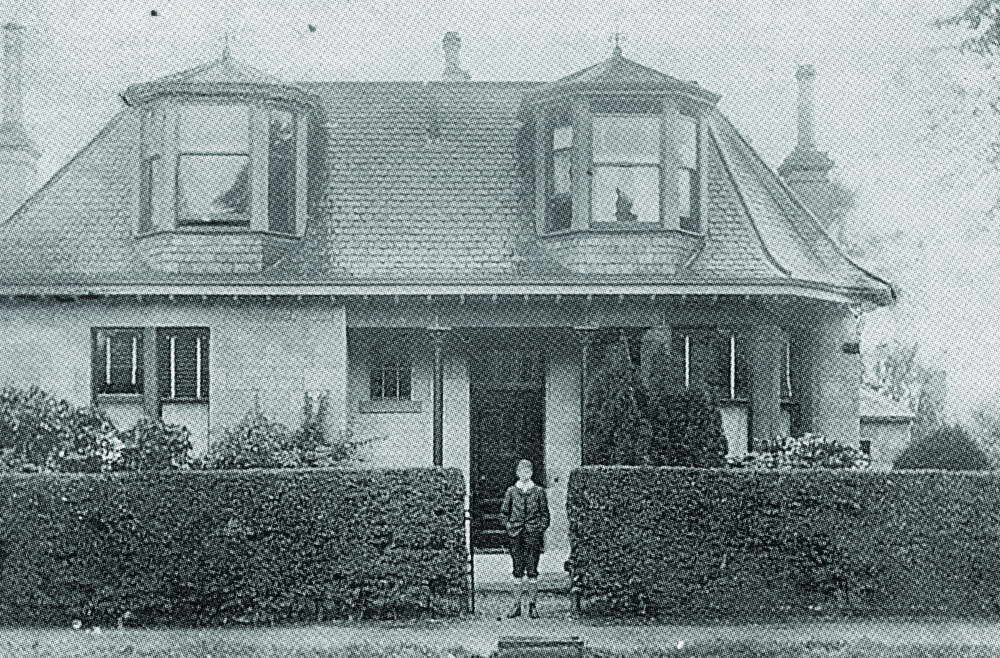
His next endeavor involved a pursuit of the principles of selenium cells. As early as 1873, it had been discovered that the resistance of selenium diminishes when exposed to light. This was later explored and the findings published by a German, Ernst Ruhmer.1 Essentially, it was determined that, when a selenium cell is exposed to light, it will develop a minuscule amount of electrical current.
Baird was to write: “He [Ruhmer] had laid the foundation of the talking picture with his work on recording sound on cinema film. He also tried numerous television experiments by connecting selenium cells, so that he could transmit to shutters, whereby each shutter would react to varying amounts of light imposed on the selenium cells. Using his apparatus, Ruhmer could transmit the images of figures and numbers in the selenium-driven fixture.”2
About all that Baird’s youthful experiments in this regard produced were some severely burned fingers from trying to rub selenium on a heated porcelain rod, and the generation of some noxious odors that offended the rest of the Baird family. Also, these experiments produced a realization that the minuscule amount of electricity generated would have to await some form of amplification to be practical. Fleming’s valve (diode tube) and De Forest’s grid tube subsequently would provide the amplification necessary for the development of practical “light valves” later on.
Baird’s Engineering Education
Young Baird’s elementary education was typical of that experienced by most youngsters whose parents could afford the tuition to boarding schools. The curriculum leaned heavily toward studies in classical languages, literature and rote memorization of what were considered to be essential dogmatic subjects. Science or any emphasis on mathematics was not considered worthy of anything other than a passing glance.
Discipline, devotion to the comprehension of theological dogma and memorized retention of Latin phrases were interspersed with a steady routine of athletics, all of which were reinforced by the frequent laying-on of the headmaster’s strong arm and a wooden staff.
After his first few years of conquering the basics, Baird found the subsequent years to be tiresome and boring; hence, he was not accorded high marks in scholastics. Frail, and rather timid and shy, Baird was not much of an athlete—a situation that fostered frequent bullying by both his schoolmates and his headmasters.
Baird announced his intention to pursue a career in electrical engineering. In 1906, he enrolled in an engineering technology college in Glasgow.
His father’s wishes were that his namesake would follow in his footsteps and take up the ministry. However, the younger John was of a different persuasion and, when the subject was broached, he was to respond brusquely, “I fear I am not a sufficient hypocrite to take to the wearing of the cloth.” Given the nature of the times, it is surprising that his impudence didn’t result in a good boxing of his ears; however, his father seemingly took no apparent offense and only sadly replied, “Aye, I think you might overcome that difficulty.”3
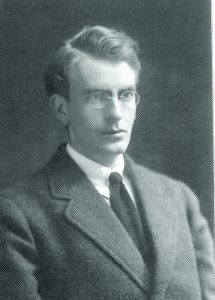
The subject was dropped and Baird announced his intention to pursue a career in electrical engineering.
In 1906, Baird enrolled in an engineering technology college in Glasgow. In light of the fact that the school had graduated many of the finest engineers in the land, King George V caused the school to be named the Royal Technical College in 1912. In 1964, it would gain its current name: The University of Strathclyde.4
An education in engineering in those days was a far cry from what today’s student considers the norm. Students attending the college were, by-and-large, young, eager men striving to make a mark for themselves; there were scant opportunities to socialize and/or dabble in electives not attuned specifically to the subject matter.
Also inherent in the curriculum was the necessity to serve as an apprentice. (Today, we might call that an internship.) The apprenticeship most often saw students assigned to workshops involving the most drudging and menial tasks for the scantest of wages under what we would now consider to be dreadful working conditions.
The normal course of study to attain an Associate Degree was four years. Due to frequent spates of ill health and extended apprenticeships, JLB’s college education consumed some eight years.
He was, however, wise enough to apply for a program that would allow him to attend Glasgow University and sit for his BSc. Although the course of study at the university was relatively short, and though Baird did not particularly distinguish himself, he was commended for his diligence and adherence to pursue matters in a thorough manner. However, the outbreak of the First World War put an end to his scholarly pursuits, and he never returned to complete his degree at the university.
Lord Reith, Baird’s Bully
As noted, the students at Royal Tech generally were not privileged individuals attending through scholarships or parental influence. Baird did fall afoot of one of the more privileged students: John Charles Walsham Reith (later Lord Reith).
Reith was one of the “heavies” who taunted Baird about his bad eyesight and frail nature. This bit of bullying in their college days would be insignificant except for the fact that Reith later would head up the monopolistic BBC (British Broadcasting Corporation) and would play a critical role in the adoption of standards for TV broadcasting…and he became a staunch opponent of Baird’s ideas. Reith may have not long remembered his college antics; however, Baird never forgave him for his insulting nature.
John Charles Walsham Reith was one of the “heavies” who taunted Baird about his bad eyesight and frail nature. Reith later would head up the monopolistic BBC and would play a critical role in the adoption of standards for TV broadcasting…and he became a staunch opponent of Baird’s ideas.
The now 25-year-old Baird was witness to the fact that “The Guns of August” had recoiled across the European continent. England and France were embroiled in a war against the Austro-Hungarian Empire and its German compatriots. Like many others, JLB dutifully applied for military service. His poor bronchial condition and two flat feet sent him to the sidelines.
Classified as “fit for domestic duty only,” he sought out a position with an electrical utility as a substation attendant. A combination of a paltry salary of a few shillings a week, the need to be available at all hours of the night and day, and his customary bouts of illness set him to search for alternative means of earning a living.
Socks, Soaps And Jams
In order to augment his 30s* weekly pay at the power station, Baird began casting about for some commercial endeavor that might reap him some capital and relieve him of the drudgery of his workaday routine. [*Note: 20 shillings equals 1 pound, i.e., 30s = ₤1/10s; in 1915 exchange rates, ₤1 = $5.00. Accordingly, JLB’s salary at the power station for a 12-hour, seven-day-a-week job was something less than $1.00 per day.]
According to accounts from the time, Baird still had television firmly in his mind; however, his total lack of capital and means put it well beyond his reach to construct any apparatus that might help him pursue those lofty ideals.
Baird still had television firmly in his mind; however, his total lack of capital and means put it well beyond his reach to construct any apparatus that might help him pursue those lofty ideals.
Other possibilities came to mind: Baird suffered from chronic cold feet often induced by the damp, cold climate of his native Scotland. He devised a simple solution of sprinkling borax into an unbleached pair of half-hose meant to be worn between one’s regular stocking and feet. By means of some ingenious advertising and some (perhaps) inventive testimonials, his “Baird Undersocks” found a place in the market and he began to realize an additional income of about ₤20 per week. His venture into merchandising continued as he added boot polish, chocolates, cigarettes, and various scents and incenses. Shortly, he had sales representatives canvassing the land as far south as London hawking his wares.
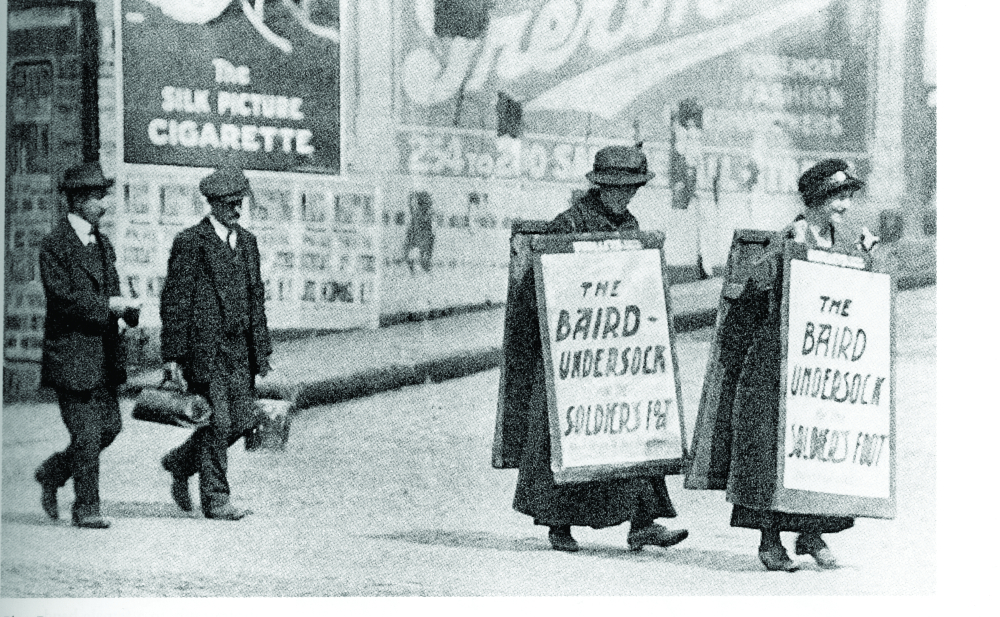
Baird Leaves The Power Works
His employers at the Power Works were not pleased to learn that their underling was grossing more than their own salaries. Their discomfort was further exacerbated when Baird decided to dabble in experiments befitting a medieval alchemist. Knowing that diamonds were the product of heat and pressure applied to carbon, he decided to try growing his own diamonds. This involved passing a large electrical current through a carbon rod encased in a pot of concrete.
The source for the required power was tapped from the substation’s electrical buss mains. The experiment plunged a large portion of Glasgow into darkness and brought the wrath of his superiors upon his head. He resigned from the power company probably just in time to avoid being sacked.
Baird’s commercial entrepreneurship was again thwarted by a long bout of illness, and what was essentially a one-man enterprise crumbled. Always the thrifty Scot, Baird had managed to save what amounted to about 12 years’ wages at the Power Works. He disposed of his mercantile business for an undisclosed sum and set his eyes on the possibilities of founding an import/export business in what he had been led to believe was the tropical haven of Trinidad.
Baird set sail for Trinidad in 1919. He proceeded to set up a canning operation on the outskirts of Port of Spain. After 18 months, Baird took passage back to his native Scotland. His tropical adventures had by no means made him rich, but his earnings had proved sufficient to allow him to pursue his dream of developing television.
Investing in an inventory of what he perceived to be salable merchandise in the Caribbean, he set sail for Port of Spain in 1919. His informants and his perceptions proved unreliable, and he soon found himself among any number of expatriates whose collective dreams of quick monetary rewards were being dashed on the shoals of reality.
Baird turned to what seemed a lucrative way to solve his dilemma. The Islands were awash in fruit that, in those pre-refrigeration days, did not lend themselves to export. Moreover, sugar was cheap and plentiful, and labor was readily available and inexpensive. He turned his mind to producing jams and jellies. He proceeded to set up a canning operation on the outskirts of Port of Spain. Never-the-mind that the outdoor vats of steaming fruit attracted hordes of swarming insects that undoubtedly enhanced the protein content of his concoctions; he endeavored to develop an industry in the export of his wares to distributors back in his native land. This too came asunder.
Again, his frequent illnesses, this time compounded by tropical disease, tumbled his fledgling empire. After 18 months in Trinidad, Baird packed his remaining jam and jelly inventory and took passage back to his native Scotland. His tropical adventures had by no means made him rich, but his earnings had proved sufficient to allow him to pursue his dream of developing television.
The Hastings Years
Baird’s sympathetic biographers5, 6 steadfastly assert that his experiments in TV had commenced in 1913 (or earlier) and had been his principal obsession. Undoubtedly, the subject had not been dismissed by Baird; however, the necessity of gaining an education and making a living, coupled with slim monetary resources, had delayed any serious efforts in this regard.
It was only upon his return to the UK from Trinidad and his relocation to the more hospitable climes of South England in the seaside town of Hastings that he could devote the majority of his time to the pursuit of the development of television. For the remainder of his life, he would be engrossed in television and allied experiments in visual imaging.
For the remainder of his life, Baird would be engrossed in television and allied experiments in visual imaging. His experiments, often conducted in his lodgings, frequently resulted in noxious odors, smoke drifting from under the door of his rooms and occasional explosive sounds
Although termed his “Hastings Years,” Baird was forced to relocate on several occasions at the bequest of his various landlords. His experiments, often conducted in his lodgings, frequently resulted in noxious odors, smoke drifting from under the door of his rooms and occasional explosive sounds, all of which were disruptive to other tenants and, not without reason, raised some fears on the part of his landlords for the safety of their premises.
But these frequent relocations did not deter Baird from his experimental endeavors. With the knowledge at hand and available apparatus, Baird put his mind to developing what is now considered to be “mechanical television.”
Principles Of Mechanical Television
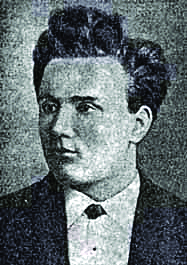
The first known concept of producing an electrical image from a light source is traceable to the German inventor Paul Julius Gottlieb Nipkow (August 22, 1860-August 24, 1940). While yet an undergraduate student, he envisioned the possibilities of transmitting light through a series of selenium cells and a rapidly spinning disk. His endeavors in this respect were aimed at the production of an “electronic telescope,”* and a patent for the device was duly applied for.
The first known concept of producing an electrical image from a light source is traceable to Paul Julius Gottlieb Nipkow, who envisioned the possibilities of transmitting light through a series of selenium cells and a rapidly spinning disk.
[*Note: Television is a rather unique word, owing its origins to two languages: tele from the Greek “far” and vision from the Latin “visio” for sight. The word “television” was first coined by Constantine Perskyi when he read a paper on the possibilities of seeing over long distances by electricity to the International Congress of Electricity in 1900. However, general investigations in this regard were called by various names: “Telescope” was one of a variety of terms used to describe these pursuits.]
Although a (later) student of Hermann von Helmholtz, Nipkow apparently failed to grasp the concept of transmitting light images through the ether. Nipkow was to see his ideas conveyed into reality when he witnessed a 1928 Baird TV demonstration in which his disk was put to use as a practical device for the transmission of TV signals.
The word “television” was first coined by Constantine Perskyi when he read a paper on the possibilities of seeing over long distances by electricity to the International Congress of Electricity in 1900.
The basic principle behind the concept of mechanical television was to intensely illuminate the subject to be transmitted. This is called the “floodlight method” and is the least efficient due to the miniscule amount of light reflected from a human face that reaches the photocell through the tiny apertures.
As the disk spins, the selenium is presented with the small quantity of light that falls directly on it through a tiny aperture to impress the changing light values onto selenium cells. And by impressing the amplified light valve variances onto a rapidly spinning disk with several apertures, the spectrum could be transmitted in bands of electrical signals. The resolution of the transmission was subject to the number of apertures in the spinning disk and the relative speed (RPM) of the disk.
The Nipkow disk was a rotating disk with holes arranged in a spiral around its edge. Light passing through the holes as the disk rotated produced a rectangular scanning pattern, or raster, which could be used to either generate an electrical signal from the scene for transmitting or to produce an image from the signal at the receiver.
According to television historian Dr. Douglas Brown,7 the secret of Baird’s early success was the discrete use of the inverse of the “floodlight” system, which dramatically increased the sensitivity of the system. Baird simply exchanged the photocell and the light source to scan the object with a cool but intensely bright flying spot of light, enabling more energy to reach the photocell. This concept was later to be termed the “flying spot” scanning method. Albeit in an electronic form, until the advent of digital television, all analog TV cameras have followed this principle.
According to encyclopedia sources: “The Nipkow disk was a rotating disk with holes arranged in a spiral around its edge. Light passing through the holes as the disk rotated produced a rectangular scanning pattern, or raster, which could be used to either generate an electrical signal from the scene for transmitting or to produce an image from the signal at the receiver. As the disk rotated, the image was scanned by the perforations in the disk, and light from different portions of it passed to a selenium photocell. The number of scanned lines was equal to the number of perforations, and each rotation of the disk produced a television frame. In the receiver, the brightness of the light source would be varied by the signal voltage. Again, the light passed through a synchronously rotating perforated disk and formed a raster on the projection screen.”
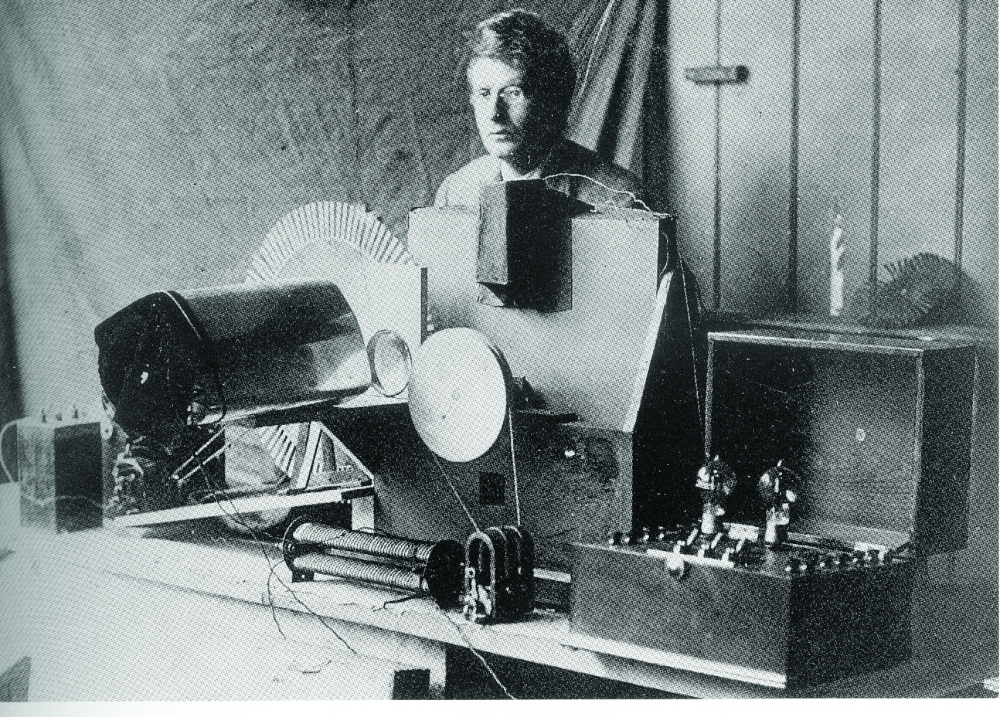
Mechanical viewers are oftentimes dismissed as having had serious limitations of resolution and brightness; however, they had other attributes that were in many ways superior to the cathode-ray-type operation that was to become known as electronic television.
In fact, despite the drawbacks to mechanical TV, the system had some admirable attributes that took cathode ray technology some 30 more years to achieve and included some breakthrough technology, like HDTV and 3D projection that are only just now beginning to be realized.
Baird’s Household Experiments In TV
Following Baird’s return to the UK from Trinidad, he devoted the next few years of his life to striving to perfect an idea for television into a practical device that would have commercial appeal. Chronically short of money and with the absence of readily available components, he was forced to construct his experimental apparatus from the workaday materials then available. Out of necessity, his apparatus took form from the utilization of varied and inexpensive components. Included were such devices as biscuit tins with hand-drilled perforations, electrical fan motors, bicycle lanterns, darning needles and gobs of glue.
Inasmuch as credit from commercial sources, i.e., banks, etc., was totally out of the question, Baird turned to private investors in an effort to fund his ongoing experiments. Each endeavor in this respect effectively diluted his percentage of ownership, increased the scrutiny of his work and elevated demands to produce a workable, commercially practical product. Always a secretive, suspicious individual, Baird was wont to share any details regarding the process of his endeavors; these traits did not endear him to his investors.
Chronically short of money and with the absence of readily available components, Baird was forced to construct his experimental apparatus from the workaday materials then available. Included were such devices as biscuit tins with hand-drilled perforations, electrical fan motors, bicycle lanterns, darning needles and gobs of glue.
According to his sympathetic biographers Waddell and McArthur,8 Baird was also quite adept at recruiting volunteer (unpaid) assistants and workers to aid him in his work. Reputedly, these volunteers worked on a need-to-know basis. Workshops and labs were set up in various locations with distinct teams of personnel, all of whom were kept unadvised of work being performed by the others.
On rare occasions when Baird would open up his workshop and display the state of his creations for examination by his investors or the nosy probing of the press, he would shield portions of his apparatus from investigation or purposely display components that did not reflect the true nature of his work to date. Even some of his closest friends who had gained some knowledge of his goals were only vaguely aware of the intricate workings of his various models. And his investors were kept quite in the dark.
He avoided patenting any of his work and held true to his principle that his devices should be complete working models before any patents would be sought. This quirk also infuriated critics in the academic community who charged him with subterfuge.
Television Breakthroughs
These were dark days as Baird’s available capital dwindled, his investors lost patience of ever hoping to recoup their investments, and Baird shuffled about the streets in threadbare clothes and worn-out shoes that he could ill afford to have resoled.
His sole advancement at the time was the ability to transmit a static image over the space of a few meters of wire. All of the essential elements appeared to be available; however, the relative inefficiency of available selenium cells kept thwarting his endeavors. The necessity of using extremely high-intensity lighting to achieve imaging was a major stumbling block. Baird turned his attention toward the development of more efficient light valves.
Baird’s efforts resulted in a two-fold advancement. By using improved light valve technology, images could be transmitted without the need for high-intensity lighting. In fact, by employing infrared lighting, images could be created in almost total darkness.
His efforts resulted in a two-fold advancement. By using improved light valve technology, images could be transmitted without the need for high-intensity lighting. In fact, by employing infrared lighting, images could be created in almost total darkness, a development that will be examined later.
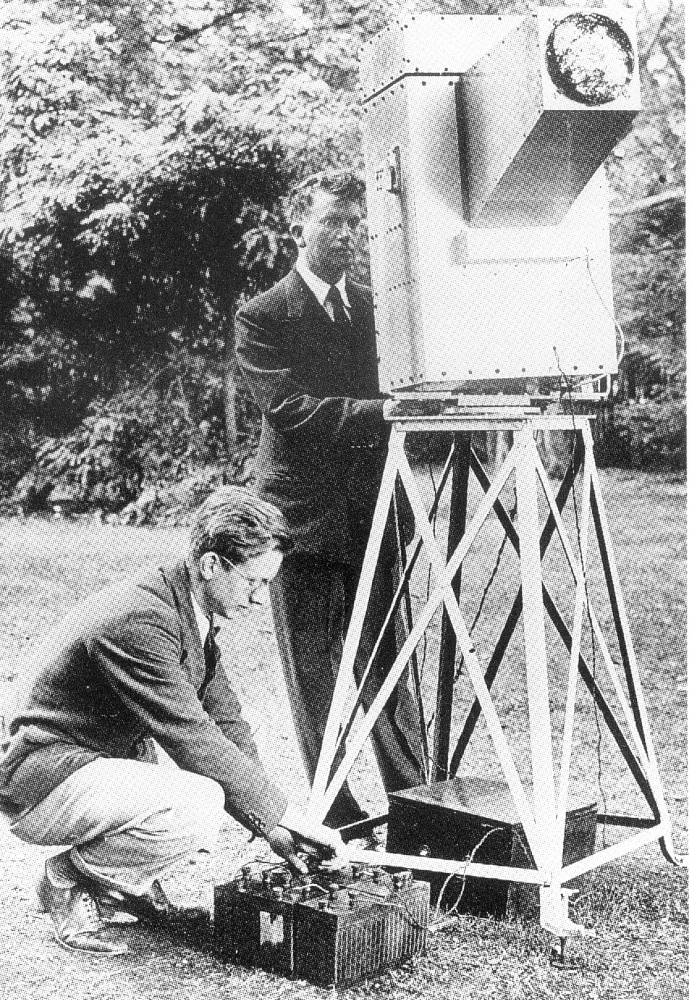
The Tide Turns
In those bleak days, it appeared Baird had met defeat. With barely enough money to feed himself, let alone buy materials to further his investigations, he might well have been forced to abandon his pursuit. Providence prevailed when his family in Scotland learned of his dire circumstances and advanced him monies. And, an old acquaintance from his mercantile days, Captain Olivier George Hutchinson, became sufficiently intrigued to buy out Baird’s by-then-recalcitrant investors and fund Baird’s endeavors. Relieved of constant financial pressures, Baird’s advancements escalated.
Baird had vastly improved the performance of selenium light valves. By increasing the size of the Nipkow disk, the number of apertures and the speed of rotation, the resolution of the projected images had been improved materially.
Baird had vastly improved the performance of selenium light valves. By increasing the size of the Nipkow disk, the number of apertures and the speed of rotation, the resolution of the projected images had been improved materially.
He was thus persuaded to conduct a public demonstration of his inventions. In April 1925, his apparatus went on display in the electrical appliance section of Selfridge’s Department Store in London. For purposes of the demonstration, the transmitter and a receiver in another room were linked via wireless. Admittedly, the images transmitted were still basically static; however, they intrigued the public and, even more importantly, gained the attention of the technical press.
Captain Hutchinson, Baird’s new investor, took an active role in what was now Baird Television Ltd. He essentially became the principal financial officer; Baird’s family infused additional capital.
Advancements Escalated
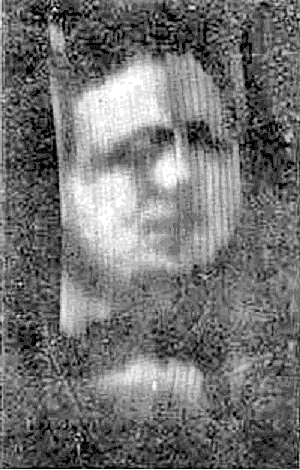
On October 2, 1925, Baird transmitted the image of a ventriloquist’s doll with discernible features in which movement could be portrayed. He quickly enlisted the services of an adjacent tenant’s office boy as a model, bribed him with a half-crown coin and was able to transmit the young man’s features with a reasonable likeness. Hence, William Traynton was the first human subject portrayed on TV—and probably the first “paid” actor in the new medium.
On October 2, 1925, Baird enlisted the services of an office boy as a model and was able to transmit the young man’s features with a reasonable likeness.
During the balance of 1925 and into 1926, Baird demonstrated his apparatus to a growing number of academicians and the press. Each demonstration showed signs of progress; however, he epitomized the saying “No one is a prophet in his own land,” with glowing tributes from other countries and scant mention in his homeland.
In December 1926, Baird revisited the transmission of his infrared “Noctovision” and demonstrated that this low-light transmitter was quite capable of penetrating fog and smoke, thus making it a process that would prove valuable as a maritime navigational tool.
In May 1927, a wire-line transmission over 438 miles from London to Glasgow was demonstrated. The four-wire circuit used a pair for transmission of vision (video) and a pair for speech (audio). Reports from the time stated, “The image was perfectly steady…it was remarkably free from distortion and any signs of streakiness….”9
In May 1927, a wire-line transmission over 438 miles from London to Glasgow was demonstrated. On February 9, 1928, a video signal was transmitted on a wavelength of 45 meters from England to the United States.
Following his London to Glasgow transmission, on February 9, 1928, a video signal was transmitted on a wavelength of 45 meters from England to the United States. The image was displayed on a ground glass screen measuring about three inches square. Almost immediately thereafter, it was arranged to transmit a video signal to a ship at sea. Passengers and officers of the Cunard liner Berengaria were linked visually to the wireless transmission from the Baird Labs in London.
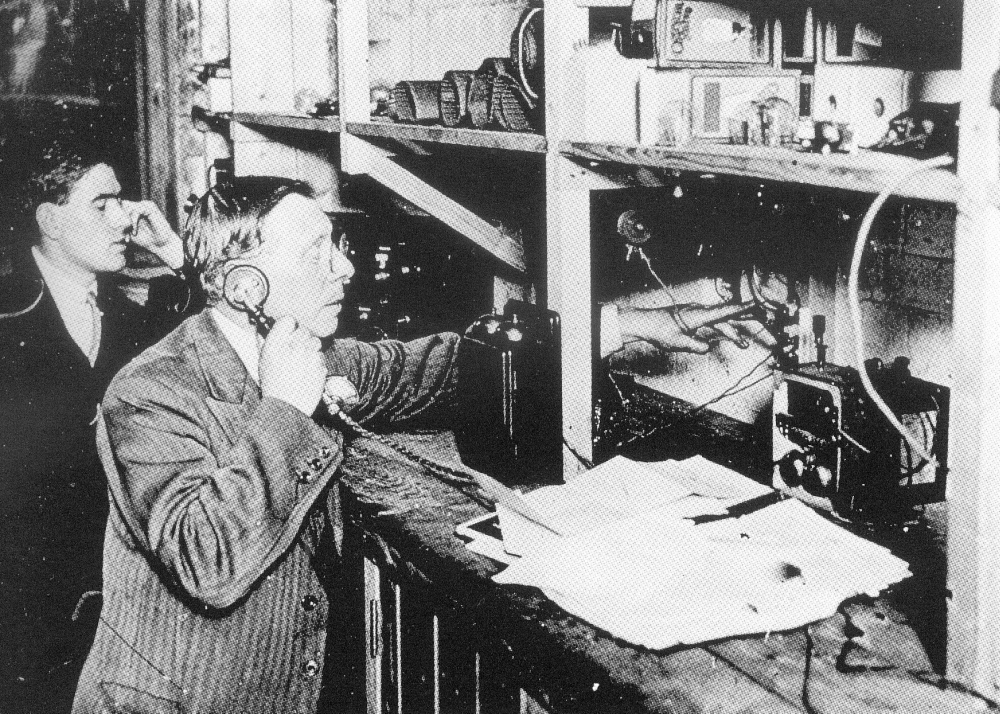
TV Introduced To The Public
The bugaboo of being able to televise material in broad daylight was set aside in June 1928 when Baird demonstrated that subjects could be successfully televised with natural illumination, without supplementary lighting. The following month, July 1928, the transmission of color images was demonstrated. Again, it was reported that “The delicate shades of pink and other colors…along with lifelike images of flowers were shown in vivid fashion….”10 Further development during the Summer of 1928 included the introduction of televised “stereoscopic” images that transformed a two-dimensional medium into one that added breadth and depth to the transmitted images.
Baird was convinced his apparatus had reached the stage of commercial application. By 1930, Baird Television receivers were being produced and marketed to consumers in the UK.
By Autumn, Baird was convinced his apparatus had reached the stage of commercial application. The National Radio Exhibition proved the opportunity to introduce television to the public. A popular actress, Peggy O’Neil, was persuaded to perform before the camera. A half hour of entertainment ensued during which Ms. O’Neil sang, told droll Irish stories and vividly demonstrated the entertainment value of this new medium.11
Of course, at the time, no commercial TV receivers existed; hence, the sole benefactors of transmissions were radio amateurs with the willingness to construct their own receiving sets. This was about to change. By 1930, Baird Television receivers were being produced and marketed to consumers in the UK.
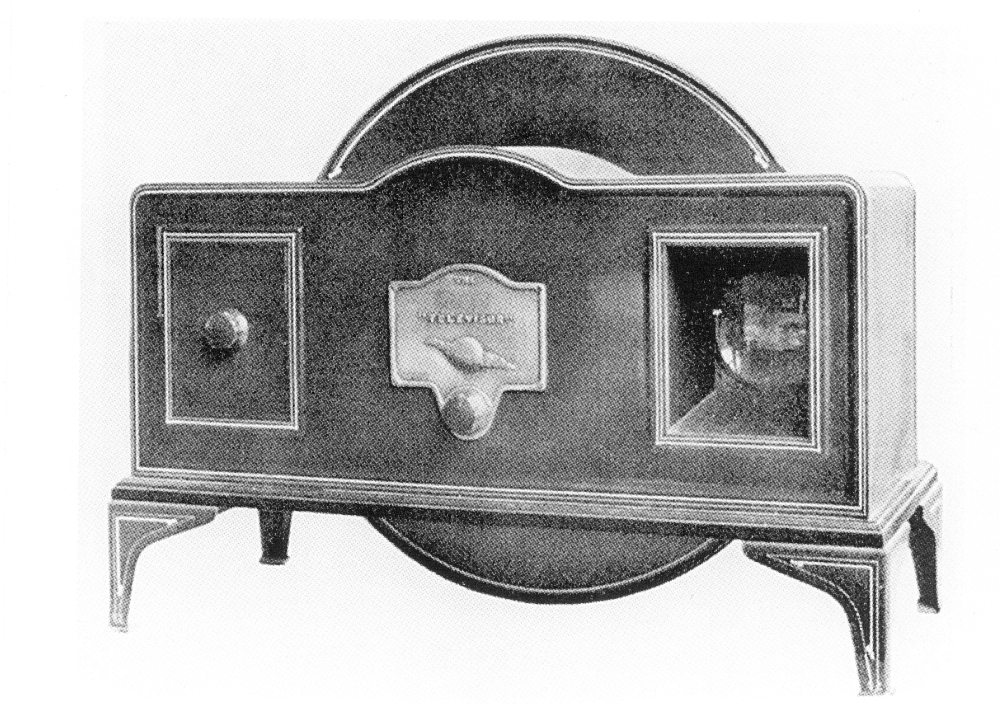
BBC Trials And Tribulations
This is where the story becomes a bit more complex and nowhere as simple as described in most published biographies.
At that time, the BBC was privately owned as the British Broadcasting Company, with General Electric as one of the major shareholders. Baird’s biggest competitor was RCA, a company formed by General Electric and US Marconi at the request of the American government and US military to maintain control over, and keep foreign nationals from controlling, American technology interests.
Despite glowing testimonials from both domestic and continental scientific observers that the TV concept had practical application, the BBC opposed the endeavor and stated that the process had not yet reached a point of being “commercially” viable.
It can now be seen that there was much more to it: When John Logie Baird went, “cap in hand,” to ask his old rival John Reith at the BBC for assistance, Reith’s reactions would be guided by the instruction of his fellow directors who, unfortunately, were also Baird’s most significant competitors in television development.
The BBC was, at the time, also a government entity with principal authority over the airwaves for commercial wireless transmissions in the UK. Between 1929 and 1931, with typical bureaucratic response, the agency steadfastly refused to allocate time and/or bandwidth for experimental TV broadcasting. Despite glowing testimonials from both domestic and continental scientific observers that the TV concept had practical application, the BBC opposed the endeavor and stated that the process had not yet reached a point of being “commercially” viable.
Eventually, the British postmaster general was petitioned by Baird to intercede; a demonstration followed, and Lord Reith and his minions were forced to agree reluctantly to provide Baird with three 15-minute time slots per week, often during the wee small hours of the morning.
Eventually, the British postmaster general was petitioned by Baird to intercede; a demonstration followed, and Lord Reith and his minions were forced to agree reluctantly to provide Baird with three 15-minute time slots per week, often during the wee hours of the morning. Thus, Baird won a small victory over his college-age tormentor.
Relations with the BBC gradually improved. By 1931, TV broadcasting had become a regular feature available through the BBC. However, this was not to be the end of Baird Television Ltd.’s encounters with the BBC. (Skipping ahead somewhat, in 1937, the BBC would succumb to the RCA-driven EMI/Marconi concept for adoption of “electronic” television, and Baird Television’s concepts were handed a devastating setback.)
Relations with the BBC gradually improved. By 1931, TV broadcasting had become a regular feature available through the BBC.
It was during this interlude that Baird and the American TV inventor Philo T. Farnsworth’s paths crossed (see “Industry Pioneers #9: Philo T. Farnsworth, The Father of TV”). Pressured by the BBC, Baird was forced to adopt some of the principles of “electronic” television. Baird arranged with Farnsworth to “borrow” some of Farnsworth’s transmission apparatus for demonstration to the BBC. In an unfortunate turn of events, several critical elements of the Farnsworth apparatus were damaged in shipment and rendered useless. The remaining equipment was consumed in a disastrous fire that struck Baird’s laboratory in the Crystal Palace. These somewhat mysterious events cleared the way for RCA/Marconi/EMI to demonstrate superiority in the realm of electronic TV transmission.
Baird’s Other Efforts In Imaging Technology
Baird, in an effort to archive his developments, set about to record on wax disks various transmissions. These formed a process that he dubbed PhonoVision. Original disk recordings of these early attempts at transcribing video still exist in various museums in the UK.
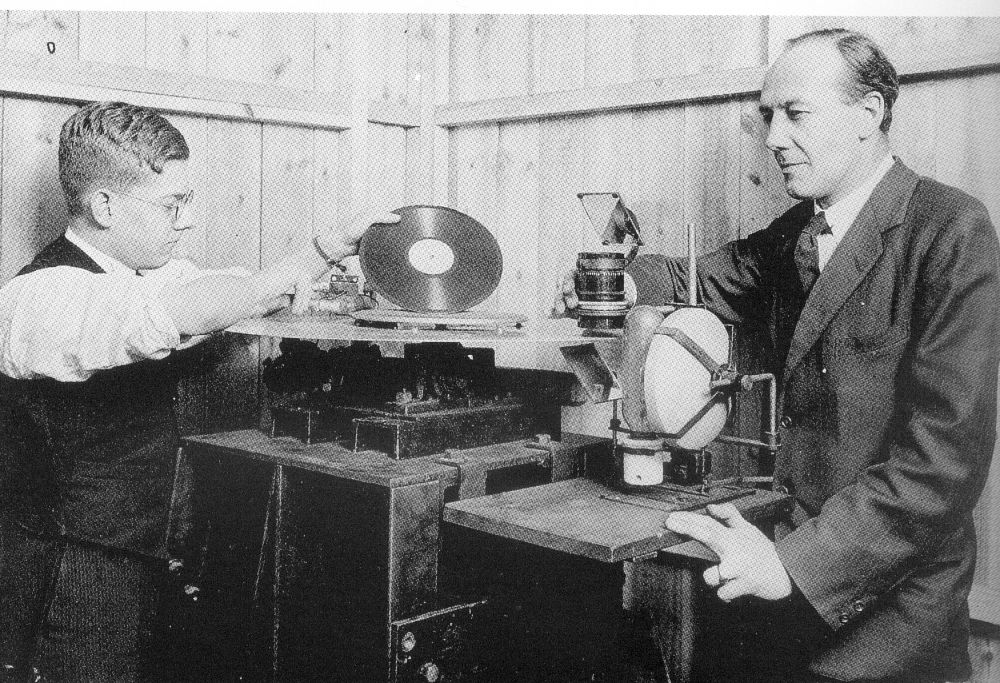
Another ambitious project, quite aside from the development of TV, was the development of an early form of facsimile apparatus.
McArthur and Waddell frequently alluded that Baird was seriously endeavoring to develop the radio imaging process that was to become radar. However, no concrete evidence of such activity can be found in the records. Investigations in this regard continue to this day and may yet prove than Baird had a significant role in the development of radar.
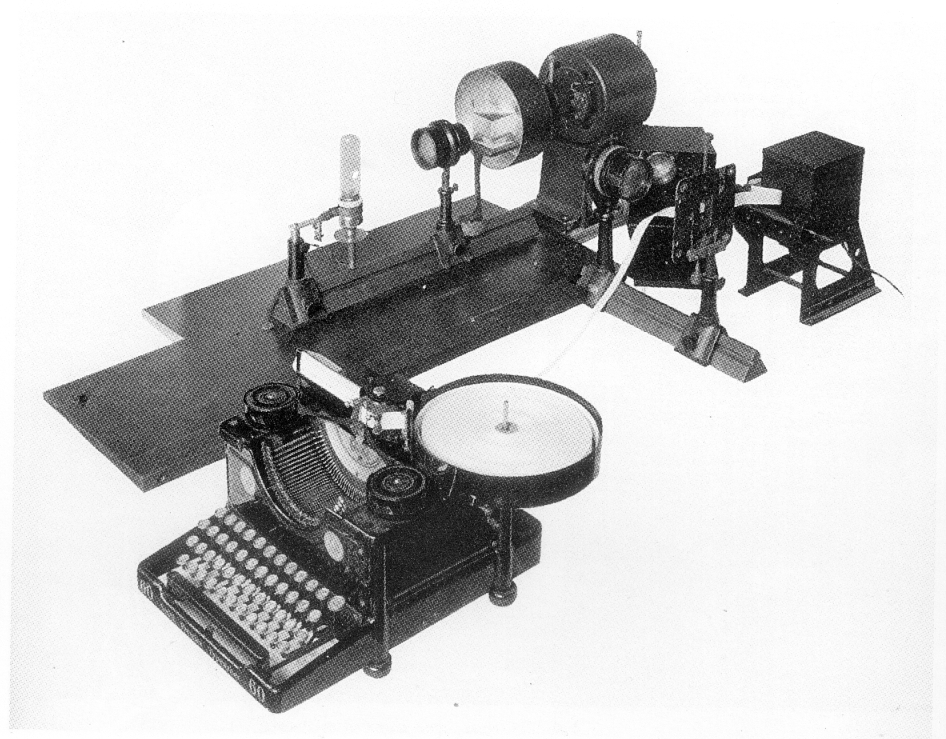
Investors Take Over
Unlike so many other pioneering inventors we have examined in this Industry Pioneers series, Baird was a reasonably astute businessman with a sharp eye for finance. However, the financial rewards so far gained were trivial compared to the time and toil that Baird had to this point expended on the development of his invention.
By 1932, transmission of television was being performed routinely by the BBC. This did not materially add to the company’s coffers; BBC made the airwaves available, but the financial burden of producing material (talent payment, studio expenses, etc.) and transmitting TV signals was borne solely by Baird Television Ltd. In fact, BBC charged the company for airtime. A small profit was being realized from the production and sale of TV receivers, but the net worth (about $100,000) of the company was something less than phenomenal.
Baird and Hutchinson set about selling equity to bolster their capital reserves. This was a disastrous mistake: Baird’s and Hutchinson’s equity was diluted severely, and almost immediately, control of Baird Television Ltd. fell into the hands of cinema giant Gaumont British Picture Corporation.
Realizing that further expansion of Baird Television Ltd. would require additional capital, Baird and Hutchinson set about selling equity to bolster their capital reserves. In many ways, this was a disastrous mistake: Baird’s and Hutchinson’s equity was diluted severely, and almost immediately, control of Baird Television Ltd. fell into the hands of cinema giant Gaumont British Picture Corporation.
Baird was summarily dismissed as president and forced to resign his position on the Board of Directors. Isidore Ostrer became the CEO and chairman of the board; Baird was retained in an employee capacity as titular general manager. Stripped of any significant influence, Baird retired to his private laboratory to pursue his investigations of technology in the field of visual imaging.
By this time, Baird had acquiesced himself to the superiority of cathode ray tubes as a better solution for receiver sets. Without much fanfare, he set about establishing a research facility to pursue the matter and hired Dr. Constantin Szegho to superintend the new facility.
Baird’s European Alliances
As technical advancements had occurred, and to bolster distribution, alliances had been made with various continental enterprises. These arrangements included subsidiary operations in Germany, France and Italy. Baird’s joint venture arrangement with Fernsch AG Ltd. in Germany was prospering; however, that entity was facing competition from RCA-funded Telefunken. In the UK, Marconi/EMI was making some inroads into what had been a Baird monopoly. A move to merge Baird with Marconi/EMI was proposed and almost succeeded until Ostrer ruled against that prospect. Hence, Marconi/EMI fell under the influence of RCA, and Baird Television had bred another serious competitor.
In 1935, after two years of trials, the BBC ruled that the RCA-Marconi/EMI 405 line scan system surpassed the Baird 240 line scheme. Baird TV was thusly forced to cease any further activity in the public broadcasting market
The situation came to a head in 1935 when, after two years of trials, the BBC ruled that the RCA-Marconi/EMI* 405 line scan system surpassed the Baird 240 line scheme. Baird TV was thusly forced to cease any further activity in the public broadcasting market. [*Note: RCA denied any financial connection with Marconi/EMI.]
As noted, Gaumont undoubtedly was the most significant British producer of motion-picture films and a major influence in cinema theater operations. The setback in TV broadcasting made further ventures into cinema projection systems even more compelling.
Cinema Projection
Baird Television Ltd. had successfully televised the running of the Epson Downs Derby in 1932, an event that was broadcast on BBC. However, perhaps even more meaningful, the proceedings were shown in a cinema environment on large-screen receiving apparatus. The horse race at Epson Downs was “shot” with three cameras using natural lighting; the receiving images were recombined seamlessly at the cinema, and the resultant display was one large picture measuring nine feet wide by seven feet high. The picture was accompanied by sound. Overall, the viewing audience was wildly enthusiastic, and the press glowed with accolades.
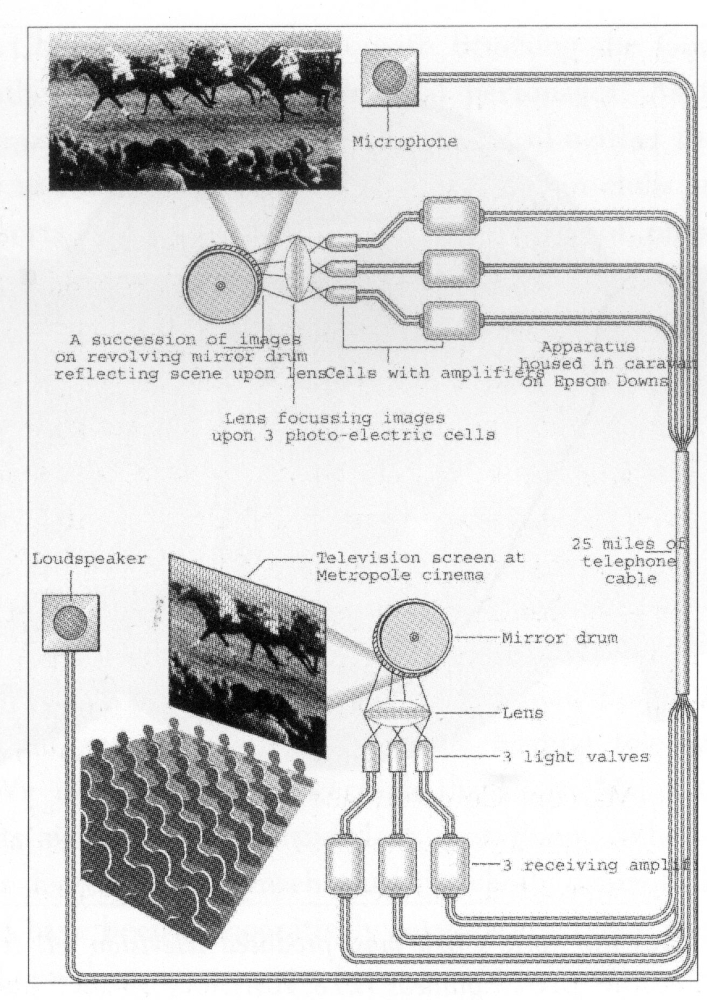
At the time, there were two distinct schools of thought as to how commercial acceptance of television could be pursued. There was little money to be made in producing programs for transmission to the public (advertising was essentially banned), other than through the sale of receiver sets. The use of the new media for screening to paying audiences seemed much more lucrative. Gaumont quickly set up Cinema Television Ltd. as a subsidiary to develop and market television—what it perceived to be a more profitable pursuit. Subsequent transmission of sporting events and theatrical performances for theater paying customers proved highly popular; screen sizes and image resolution were further refined.
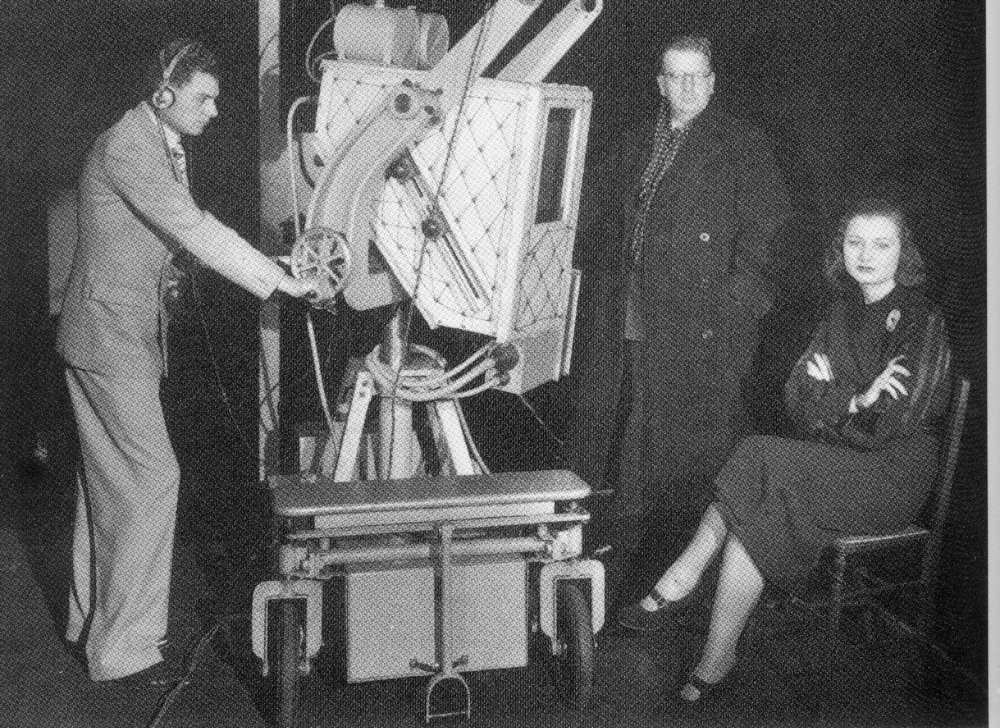
But, again the clouds of war were gathering over the European continent.
Wartime Activities
With the outbreak of World War II in September 1939, further development of TV was brought to a standstill. Bondholders immediately took action to force Baird Television into receivership, and the company’s assets were seized.
Baird spent the war years toiling in his laboratory, often under tenuous circumstances, perfecting his color and three-dimensional television processes. But the political decisions made in the 1940s delayed the introduction of color TV, HDTV and 3D transmission for more than three generations.
Szegho, as a Hungarian national, was dispatched to the US to head up the fledging Cinema Theatre operation in New York. But, when the British government forbade any export of capital, the US operation was cash starved into oblivion. Norm Rauland hired Szegho and set him to work on developing CRTs for radar (see “Industry Pioneers #15: E. Norman Rauland, American Industrialist”).
Baird offered his services to the British military, but his overtures were patently ignored. He spent the war years toiling in his laboratory, often under tenuous circumstances, perfecting his color and three-dimensional television processes.
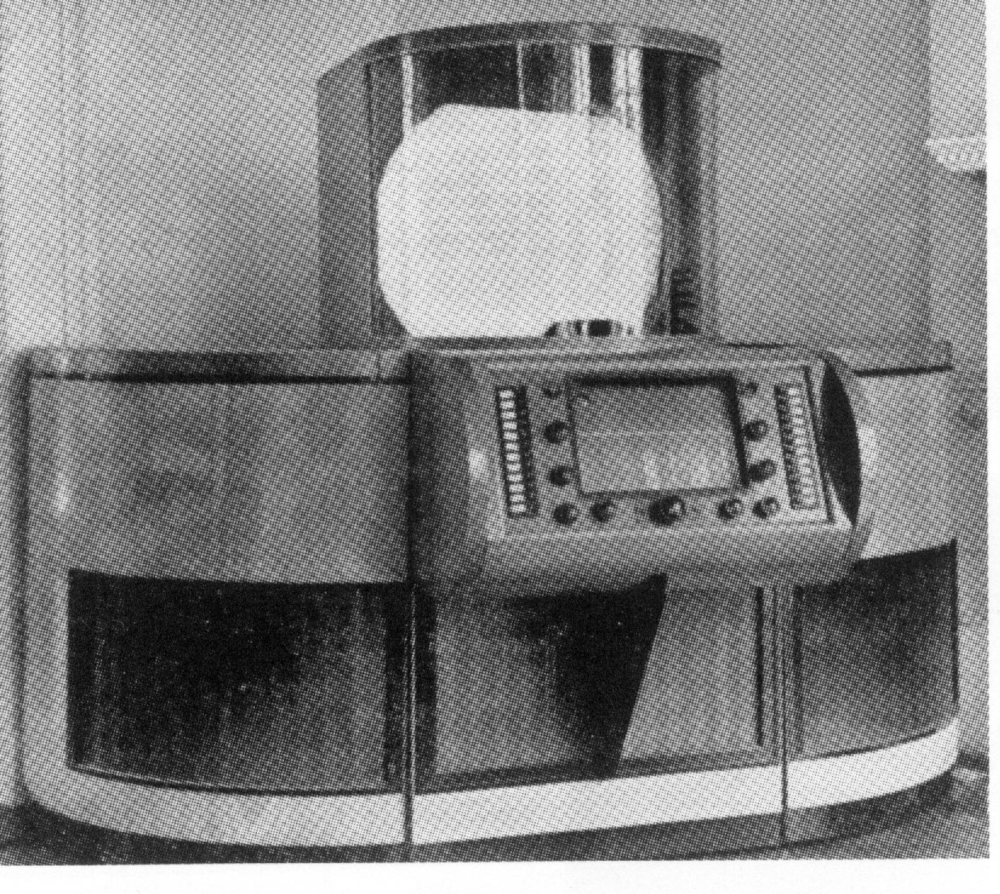
The development, the intrigue and the outright corruption involved in the marketing of color TV to the American public is a lengthy tale unto itself. Let’s just say, the political decisions made in the 1940s delayed the introduction of color TV, HDTV and 3D transmission for more than three generations.
An Enduring Legacy
John Logie Baird, who fought his battles with ill health for most of his lifetime, succumbed to a heart attack on June 14, 1946.
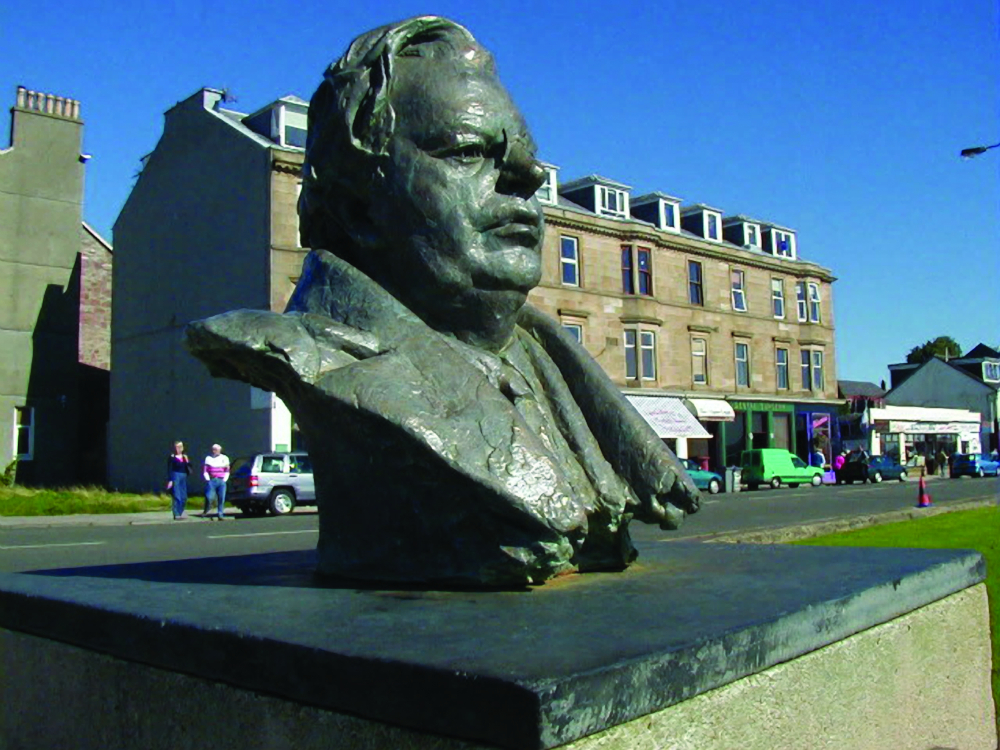
It was recognized by all the early pioneers in television that the cathode ray tube as developed in 1893 was the solution for the depiction of images at the receiver. The principal contentious points lay in the development of how images could best be scanned and transmitted. The two primary methods have been termed the Mechanical System and the Electronic System. This terminology denotes a rather simplistic explanation and, as we have seen, both systems had their relative advantages and drawbacks.
At the time, the CRT was not yet a reality for transmission purposes. Farnsworth in the US was exploring the concept, and Vladimir Zworykin (later employed at RCA) was likewise engrossed in the subject. However, neither could claim successful transmission of TV images suitable for commercial application.
In the early 1930s, Baird’s mechanical TV and the concept of electronic (CRT) scanned TV were both contending concepts, either of which was deemed worthy of consideration. Eventually, photomechanical televisions were replaced by completely electronic devices. But even today’s models rely on the horizontal-scanning method conceived by Paul Julius Gottlieb Nipkow in 1883.
Acknowledgment: Sincere appreciation is extended to Dr. Douglas Brown, MPhil, PhD (Baird and television technology historian), project director of the Strathclyde Science and Technology Forum, University of Strathclyde, for his review, able comments and corrections to this manuscript
Dr. Brown’s work on Baird was published by Middlesex University Technical Resources (www.mdx.ac.uk) as Images Across Space: The electronic imaging of Baird Television (ISBN 978 1 874289 21 0).
Sidebar: Images Across Space
As this material was being prepared for publication, I learned that Dr. Douglas Brown’s long-awaited book, Images Across Space: The electronic imaging of Baird Television, detailing Baird’s achievements in television development, has been released.
Brown, an instructor at Strathclyde University in Glasgow, Scotland, undoubtedly is the foremost expert on Baird’s activities in particular, and a keen historiographer of television development in general. As I acknowledge in this Industry Pioneers installment, I am indebted to Brown for his gracious sharing of knowledge, review and correction to this biography, as well as that of E. Norman Rauland/Dr. Constantin S. Szegho (see “Industry Pioneers #15: E. Norman Rauland, American Industrialist”).
Images Across Space avoids the earlier days of Baird’s activities and the romantic storyline that other biographers have tended to dwell on. Instead, Brown’s book concentrates on the technological advances achieved by Baird. Previously unpublished photographs, originating from the Baird Television Company, illustrate the level of sophistication and the wide range of electronic technology practiced, leading up to the demise of Baird Television, and its continuation from 1939 as Cinema Television.
The photographs plus illustrations (about 195, including five pullout pages) reveal the Baird cathode-ray tube facility and laboratories in the Crystal Palace and the Rotunda outbuilding. There are also photographs of Baird TV apparatus installed at Alexandra Palace.
JL Baird and Cinema Television were world-leading pioneers in commercial television by the sending, receiving and projecting of “big-screen” television pictures for paying audiences in London; these exploits subsequently were introduced into the United States. It is also revealed that Baird Television made an important breakthrough in sensitive photo-surfaces that eventually would revolutionize all electronic television cameras, rendering them truly panchromatic. This led to the success of color television on both sides of the Atlantic. Cinema Television is shown to be a main contractor for specialized radar display tubes and other previously unrevealed war work during World War II.
For those interested in further study of early video and attendant communication technologies, Brown’s book will prove to be an interesting and invaluable resource.
Footnotes:
1 Ruhmer, Ernst, Das Selen und seinen Bedeuten in Electral Technique, 1903, long out of print
2 Baird, John Logie, Television and Me [originally published as Sermons, Soap and Television, The Royal Television Society, 1988; current edition: Mercat Press Ltd, Edinburgh, 2004 (ISBN 184183 0631)
3 Ibid
4 Kamm, Antony & Baird, Malcolm, John Logie Baird: A Life, NMS Publishing Ltd. Edinburgh, 2002
5, 6 McArthur, Tom & Waddell, Peter, The Secret Life of John Logie Baird, Century Hutchinson Ltd, London, 1986
7 Brown, Douglas, personal correspondence with the author
8 Tiltman, Ronald F, Baird of Television, Ayer Company Publishing Inc., North Stratford NH, 1999 [reprint]; originally published in a series Telecommunications, Seeley Services, London, 1933
9 McArthur & Waddell, op. cit.
10 Tiltman, op. cit.
11 Tiltman, op. cit.
Further Reading:
- McLean, Donald F., Restoring Baird’s Image, Institute of Electrical Engineers, 2000
- D.F. McLean has written and lectured extensively on early TV development. His research and subsequent papers can be examined at www.tvdawn.com
- Burns, Russell, John Logie Baird, Television Pioneer, Institute of Electrical Engineers, 2000
- Herbert, Ray, Seeing by Wireless—The Story of Baird Television, PW Publishing, Broadstone BHIS SPW, 1997
This article was originally published in the December 2009 and January 2010 issues of Sound & Communications.
Click here for more of Sound & Communications’ “Industry Pioneers” series.
